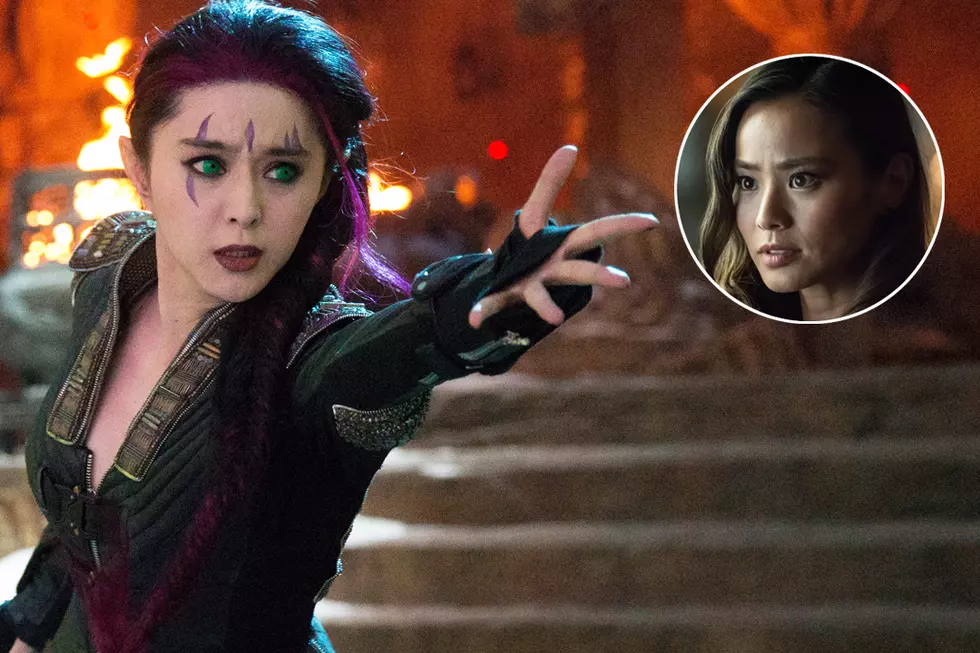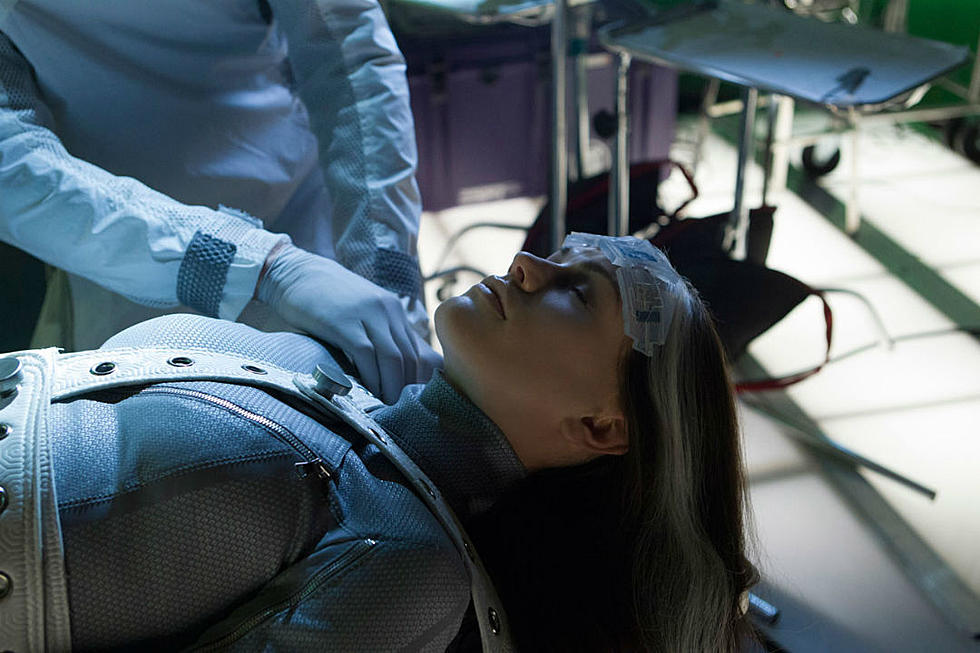
10 Easy Entry Points Into The Continuity Quagmire That Is ‘X-Men’ Comics
You may have heard that this week sees the release of X-Men: Days of Future Past, which, as far as I can tell from the television advertisements, is largely about a school of mutants trained to use their innate super-abilities to eat bacon cheeseburgers. If this premise has tickled your fancy, but you have never yet dared to dip your toe into the X-Men comics due to the justified fear that it is a cesspool of continuity that comes from fifty years of time travel, clones, evil alternates, mind control, primordial cosmic space entities, and hacky/borderline racist international accents, don't worry: I am here to help. Here I have assembled for you, in roughly chronological order, a round number of X-Men eras and stories that should make things a little less intimidating should you choose to further introduce yourself to Marvel's merry mutants.
A couple of quick notes: this list focuses on only the main X-Men titles and for the most part does not contain spin-off titles such as X-Factor or X-Force; that's a whole other list and kettle of fish. Also the list focuses on books and formats that are currently available in print such that you might put these things on your bookshelf. There are many more quality stories available digitally either through Comixology or Marvel Unlimited. Finally, this is merely meant to be a list of several suggested entry points into X-Men history; it is not intended as a comprehensive list of best ever X-Men stories. If your favorite run or story got left off, I guarantee you it was not an intentional slight. [Editor's Note: But it does make you the worst person in human history]
STEP ONE: THE 1960s
Stan Lee and Jack Kirby are, respectively, the most famous and the greatest creators ever in the history of superhero comics. Their combined twenty fingerprints, together or separately, are all over such timeless characters as the Hulk, the Fantastic Four, Captain America, Ravage 2099, and Stripperella.
But here's the thing: their introductory run on the X-Men is easily the least of their creations. If you want classic Lee/Kirby storytelling, you should check out the Fantastic Four or Thor. But if you want cool, comprehensible stories of the original five X-Men—Cyclops, Marvel Girl, Angel, Iceman, and Beast—I recommend you skip to X-Men Season One by Dennis Hopeless and Jamie McKelvie, and X-Men First Class by Jeff Parker, Roger Cruz, et al. These books retell the tales of the Lee/Kirby era with a more modern sensibility and the kinds of adjustments that come from fifty years of hindsight (for example, giving Jean Grey more characterization than just being “the girl”).
STEP TWO: THE 1970s
True story: the only reason the X-Men are a phenomenon today and not a footnote of Silver Age comic history is due to the relaunch of the title in the mid-'70s by Len Wein and Dave Cockrum starting with Giant Sized X-Men #1. It is one of the most well known pieces of comics trivia that the X-Men comic had been reduced to running reprints by the time of this unprecedented revamp of the series in which the team was introduced to a new generation by adding a 1970s white person's idea of international flavor and, once Chris Claremont takes over the title from Wein, the purple-prosed soap operatics the title is famous for today. This is the run that brings to the team fan favorite characters such as Storm, Colossus, Nightcrawler, and some scrub called Wolverine.
Honestly, the best thing you can do is just start with Giant Sized X-Men and move forward from there. Fortunately, thanks to the Uncanny X-Men Omnibus, you can do just that. This volume contains such classic stories as the introduction of the Phoenix, the Proteus saga (this was actually drawn by John Byrne; see the next entry in this list), and the time the X-Men fought leprechauns.
STEP THREE: OTHER, DIFFERENT, LATER PARTS OF THE 1970s
Arguably the most creatively fruitful period of X-Men history came during the period of collaboration between Chris Claremont and John Byrne. If you were to ask an X-Men fan to list the best X-stories of all time, odds are pretty good their answers would come from this era: The Dark Phoenix Saga, Days of Future Past, Wolverine versus the Hellfire Club, the introduction of Kitty Pryde, that time Arcade brainwashed Colossus into thinking overalls were a good fashion choice, etc.
While the first volume of the Uncanny X-Men Omnibus contains many of the early Claremont/Byrne stories, volume 2 gets into the meat of the Dark Phoenix saga and contains the very story for which the new movie is named. But if you don't want to drop three figures on two doorstop omnibus editions, you can skip to the highlights with these individual volumes for the Dark Phoenix Saga and Days of Future Past.
STEP FOUR: THE 1980s
Look, man. Chris Claremont wrote the X-Men for a long time. According to Sean Howe, dude would bust his ass to make sure he was the only guy writing the X-Men for almost 20 years. So you're going to see his name a lot on this list. Here are a couple of suggestions of stuff he wrote that people in their 30s are real nostalgic for.
A standalone graphic novel with art by Bret Anderson, God Loves, Man Kills is considered by many to be the quintessential X-Men story, one which really brings the civil rights metaphor that had been more or less subtext up until this point to the foreground.
If you want to see the X-Men at peak '80s, with mohawk Storm and brown costume Wolverine, you could do worse than this collection of Mutant Massacre, which has art by such luminaries as John Romita Jr, Rick Leonardi, Barry Windsor-Smith and Alan Davis, as well as including tie-in stories from X-Factor, Power Pack, Daredevil and Thor, by Walt Simonson, Louise Simonson, et al.
But if you really just want to see a bunch of X-Men stories that look like slightly better rendered versions of the early '90s cartoon, you could get this Claremont/Jim Lee Omnibus.
STEP FIVE: THE 1990s
Just, uh, just skip the '90s.
(Well, okay. If you REALLY want to, you can pick up the multi-part collection of the Age of Apocalypse, a huge, multi-title spanning story of an alternate glam rock universe where Professor Xavier is dead and Magneto leads the X-Men in a time when the world is ruled by a villain called Apocalypse. It's available in print and digital formats.)
STEP SIX: NEW X-MEN
When Joe Quesada looked to revitalize Marvel in the early years of the 2000s, one of the best moves he made was to assign writer Grant Morrison to make the X-Men viable for a whole new century. And that he did with this stylish revamp featuring great art from artists like Frank Quitely and Chris Bachalo, as well as contributions from artists like Ethan Van Sciver and Igor Kordey.
The whole run reads like a jazzed-up, energetic remix of the X-Men's greatest hits for a new generation: Sentinels, the Shi'ar, the Hellfire Club, and of course...well, I don't want to spoil anything. Plus, Morrison puts great emphasis on the school setting, making Xavier's feel like mutant Hogwarts really for the first time. While this New X-Men Omnibus would be a great place to start your X-Men collection, please note that like much of Morrison's superhero work, it builds heavily on traditions of the past, and some elements of the story will have more resonance if you've read some of the Claremont stuff from the '70s.
STEP SEVEN: ASTONISHING X-Men
If, even after reading this whole list, you're still not sure where to start with the X-Men, let me offer this suggestion: start here. After Grant Morrison wrapped up his run on New X-Men, Joss Whedon (yes, that one) and artist John Cassaday, for twenty-four issues, told a series of continuity-lite, action-packed X-Men adventures. Whatever your feelings are on the oeuvre of Joss Whedon, it's difficult to deny that this series is fun, accessible, and a solid introduction to the personalities of many of the major members of the team.
So if you're hesitant about just doing a straight-ahead chronological dive into the X-franchise, you could do a lot worse than starting with Astonishing X-Men volume 1.
STEP EIGHT: ALSO FROM THE 2000s
Following Grant Morrison's run in the early 2000s, and not counting Whedon's run, the main X-titles were either notoriously awful or else featured well-meaning stories by perfectly good writers and/or artists doing maybe not their best work. The happy exception to this is a series of stories by writer Mike Carey, paired with artists such as Chris Bachalo, Clayton Henry, and many others.
While Whedon and Cassaday's Astonishing run is a good place to familiarize yourself with main X-Men players like Cyclops, Storm and Wolverine, Carey's X-Men run, starting with Supernovas, is a good place to get acquainted with supporting characters like Rogue, Mystique, and Cable.
Unfortunately, after Supernovas, Carey's X-Men story gets embroiled in super deep-end crossover stuff like Endangered Species and Messiah Complex, but his narrative thread picks back up in X-Men Legacy. If you like his take on Rogue, she takes over as the main character of that series eventually, but all that happens in the midst of really heavy crossover-y stuff. So, uh, maybe just start with Supernovas and see how it goes from there. There's some good stories at heart here if you can deal with all the trappings of crossovers and heavy continuity.
STEP NINE: THE 2010s
The latter half of the decade of the '00s focuses on the fallout of a number of sweeping changes to the X-franchise caused by a number of big, unwieldy crossovers. This fallout included an evolution of the ideology and even the mission statement of the X-Men, as they begin to take drastic steps to protect the mutant sub-species. You can... skip all that stuff? I mean, unless you're really into it, I guess.
Anyway, the effects of that evolving ideology come to a head in 2011's miniseries Schism, by writer Jason Aaron and artists Carlos Pacheco, Frank Cho, Daniel Acuna, Alan Davis, and Adam Kubert. This is the story that leads to what is still at the heart of the status quo in the X-Men today: a clash of belief that leads to two schools of mutant thought -- those who follow Cyclops and those who follow Wolverine.
After Schism, you can follow Wolverine and his adherents as he founds the Jean Grey School in Wolverine and the X-Men. This book is fun and cool and follows up on elements of Morrison's run in great ways. If you liked the school setting of New X-Men, this is the one for you. This series is written by Jason Aaron and is drawn by artists including Chris Bachalo and Nick Bradshaw.
If you want to see what happened with Cyclops and his “Extinction Team,” Uncanny X-Men followed their adventures in stylish stories written by Kieron Gillen with art by Carlos Pacheco and others. If nothing else, Gillen succeeds in making Mister Sinister cool and interesting, a feat no one else had managed to do.
STEP TEN: OKAY, BUT WHAT'S NEW
Let's say you're not interested in these old comics for olds. These stories are so last year. You want to pick up something that's ongoing now. What can you read that you can pick up on a monthly basis?
Well, if you like Wolverine and his school, good news: even though Jason Aaron has left the title, Wolverine and the X-Men continues in the capable hands of Jason Latour and Mahmud Asrar. The new volume of that just started, so there's no collection yet. But there's that.
The flagship books, however, are both written by Brian Michael Bendis, the man who turned the Avengers into the X-Men in the 2000s, and who is presumably now trying to turn the X-Men into the Avengers of the 2010s. These two titles are All-New X-Men, with art by Stuart Immonen, which tells the tale of the original five X-Men being brought forward in time to see what has happened to Cyclops and which is, I promise, not as dumb as that sounds, and Uncanny X-Men, with art by Chris Bachalo and others, which follow grown-up Cyclops as he creates his own new school for X-Men.
And that, tovarisch, is the focused totality of my X-Men recommendations. If you can make it through this unglaublich list, from which no quarter is asked and none given, you too will soon be invulnerable when yer blastin'.
STEP 11: You don't have to take my word for it
Before/simultaneous to getting into reading X-Men comics, I recommend you download and subscribe to the podcast Rachel and Miles X-Plain the X-Men from Rachel Edidin and Miles Stokes. It covers, in more or less chronological fashion, the high and low points of the X-Men franchise. This podcast will be a great supplement and aid in getting embroiled in this mutant nonsense, even if we disagree on the coolness of Havok's hat headgear.
More From ComicsAlliance









